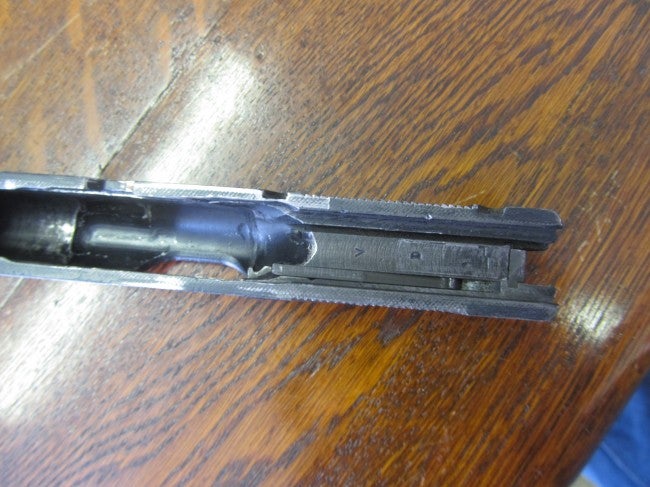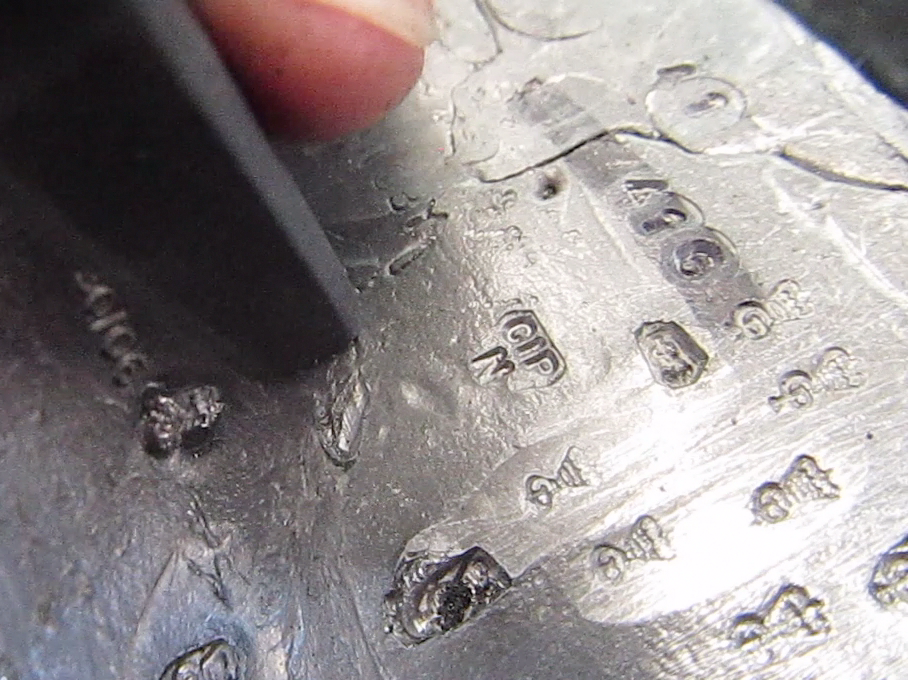The city of London does an excellent job of maintaining it’s medieval heritage even unto the 21st century. The streets are spontaneous and winding, just as Jack the Ripper wanted them to be. Tower of London is still as ominous, except instead of slicing heads, there’s the slicing of pizzas in the shops around it. Excrement no longer flies from windows but plenty of obscenities do. Plague hasn’t got a chance of killing you today but a red double decker bus zooming around a corner will do the job just as well. And as the Worshipful Company of Gunmakers operated in the early 1600s, it is still on a full schedule. Welcome, the London Proof House.
The Proof House was granted a Royal Charter in 1637 by Charles I, starting out at the southeastern portion of the wall that surrounded London. That location was moved to it’s current position today on Commercial Road because of an explosion that blew a part of the city wall out. Town Councilmen didn’t take too kindly to defensive infrastructure being destroyed so they expelled the Proof House 200 meters outside the walls so if another explosion did happen, it wouldn’t take the city wall out with it. The company was established as a “Livery company”, which means it was composed of craftsmen, just like the blacksmiths, shoemakers and tailors of that era were as well. Most of these livery occupations have lost business since that time period, which makes the Worshipful Company of Gunmakers one of the only such livery companies that has been in constant operation doing the exact same work as when it was established. It is classified as a private and charitable organization and now because it does much of the military’s proofing, quasi government.
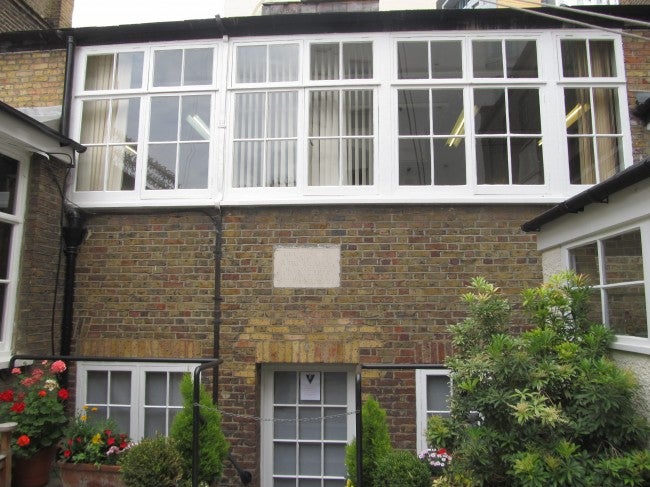
The original building dating from the Proof House’s relocation. The upper floor is the main entrance and offices. The bottom floor serves as a grand meeting or conference room.
In those early days of firearms manufacture, it was a wild business. There was no standardization of making guns and no way to guarantee they wouldn’t explode in a shooters face when fired for the first time. So in the years before 1637 a number of prominent gunmakers met and agreed that there should be a central authority to “prove” that a gun being sold in England was in fact, a gun worthy of purchase, because it had been tested beforehand. The company began work and hasn’t since stopped work even until today. Throughout the years the reputation of the Proof House became quite well known, even involving it in police investigations into illegal firearms in the UK. In 1813 some competition come around in the form of the Birmingham Gun Barrel Proof House in Birmingham, England. This other company is even now around today, and still in competition with the London Proof House.
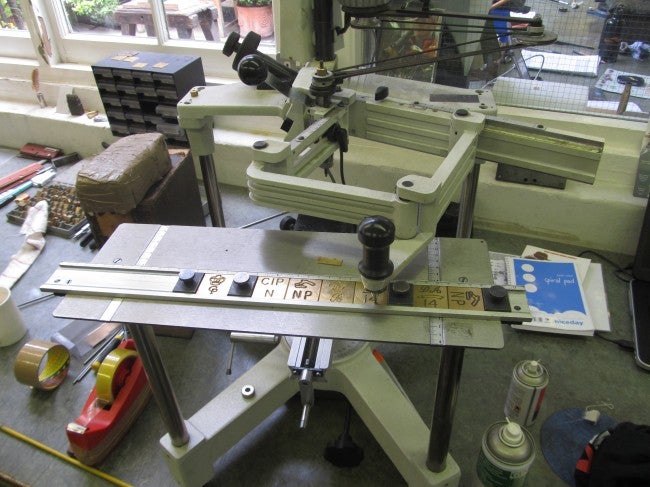
One of the modern day proof marking machines. Notice the different kinds of proof marks ready to be engraved. The crown with the the GP underneath is the London’s house signatory proof, GP standing for “Gunmakers Proof”. “CIP N” means that a firearm is nitro proofed to the European ammunition industry’s regulatory body, the Commission Internationale Permanente (CIP). The NP with scimitar surmounting means it is proofed to the British nitro standard. The second to last proof with the sword, number 14, and DA is the proof applied to deactivated firearms. “14” being the year 2014 it will be applied to.
With the closure of Nottingham (2001) and Enfield (1988) arsenals, the military also gave up it’s own proofing. Prior to the closures, the military had proofed it’s own guns and the London/Birmingham Proof Houses have been exclusively commercial products. Today, the London Proof House tests everything from 5.56×45 L85A1s (A2s tested in Germany) up unto 30mm Apache cannons for the military. The first major military contract was the new SA80s, so the Proof House established a temporary facility in Enfield to proof all 320,000 production rifles. It does the same with the Apaches that are manufactured in Somerset, England and even with Accuracy International sniper rifles in Portsmouth, where they have a special testing room proof experts travel to once a week.
So how is a firearm actually proofed? And what requires it to be proofed in the first place? Abiding by the regulations of the Proof acts of 1868 and 1978, every firearm in the United Kingdom must be proofed before it can be imported, exported, sold, after it is made or modified. Modification means that any substantial change to the barrel takes place that would affect the safe operation of said barrel (re-chambering, suppressor threads, shorter barrel, etc…). In essence, what the law is trying to accomplish is to guarantee the safety of the end user from a faulty barrel (and in a roundabout way, protects the business making the firearms). The same process takes place with American manufacturers but it isn’t regulated by the government. There are set SAAMI standards that our gunmakers abide by on legal agreement but aren’t regulated by the U.S. government.

A set of chamber measuring tools, these must be calibrated each year for accuracy. Each tool measures a certain dimension of a chamber in regards to the neck, headspace, and diameter. This single set for a .308 rifle costs upwards of ₤ 1000.
The actual process of proof is drastically simple and has been so since 1637 when the company was chartered. During the era of muzzleloaders, proof consisted of loading two over charged loads, firing them into an embankment and then observing for any barrel bulges or cracks. If the barrel burst, then it obviously failed, no money back (today it costs ₤30 for a shotgun, ₤25 for a centerfire, ₤15 for a rimfire rifle or barrel to be proofed). If it passed satisfactorily it is was proof marked in a certain location. This location is dependent on the customer but is usually somewhere visible on the barrel or above the chamber. With the “Bespoke” guns the practice is to mark them on the underside of the chamber, concealed within the stock (these guns are usually listed at ₤60,000 and up and are custom made for an individual shooter). A difference between the London and Birmingham Proof Houses is that London traditionally proof marks on the right side of a gun, and Birmingham on the left.
But what constitutes these magical proof rounds? Routinely the Gunmakers will take the mean service pressure specified for a particular cartridge, and add an additional 25% on top of that. Within the ballistics calculations, they come up with exactly how much extra powder is required to produce 25% more pressure. This is a simple process with muzzleloading firearms wherein an employee would pour in that extra amount of powder. But what if a centerfire cartridge can only take so much more powder before the bullet can’t be loaded? In this case the bullet weight is increased so that pressure ceiling can be reached. The Proof House can proof anything from .22 caliber up unto .50 caliber machine guns and the M230 30mm guns for Britain’s Apaches. Even 40mm UBGLs are proofed using a lead shot loaded projectile instead of High Explosive. The Proof House is testing the pressures in the action at the moment of ignition, anything that goes past the muzzle is not of their concern.
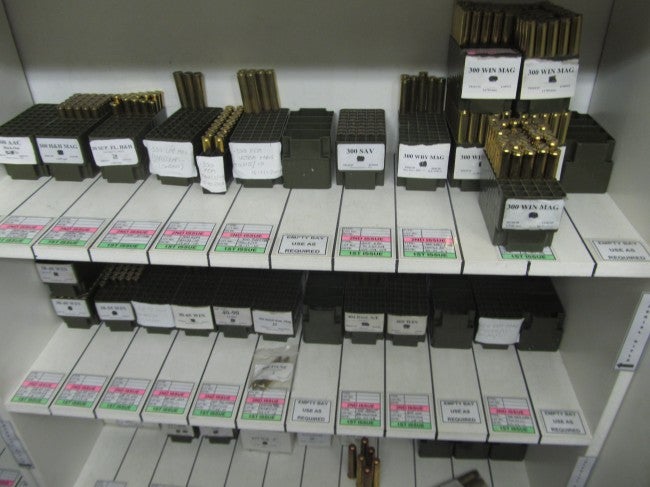
The proof round room. This small room is in a climate controlled area that is kept at 21 degrees to maintain the consistency of the ammunition. Most of these rounds are handloaded apart from a few common rounds such as .22 and 12 gauge. This particular shelf has proof rounds for .300 Win Mag rifles.
Excluding the various branches and external testing trips, everything to be proofed comes in through the front door and is logged in to the record book. It also doesn’t have to be a complete firearm, many manufacturers simply send their barrels or completed actions/barrels in to save on cost. Just because a barrel is proofed doesn’t mean it can’t still be worked on but not modified. The “Bespoke” guns are often of this case as they sometimes take years to carve and finish the stock and so the barrels are sent in ahead of time.
From the front door the guns mechanical safeties are checked and barrel cleared. Then measurements are taken of the chamber and the barrel visually inspected. If the gun passes the inspection, it is taken to the proof rooms of which there are three. The gun/barrel is placed in a vice that is pointed at a bullet catcher. From here an employee will affix a lanyard to either the trigger or a special contraption that can fire a double barreled shotgun/rifle without it’s trigger assembly. A door is sealed and the employee steps outside and pulls the other end of the lanyard which is connected through a concrete wall. An alarm is sounded to signify a discharge. After the first proof round, the gun is inspected and a second cartridge is loaded that is oiled to acquire maximum pressure on the action and the same process is repeated. If the gun has passed the proof, then it is withdrawn, cataloged, and the appropriate proof mark is applied. On to the next gun.
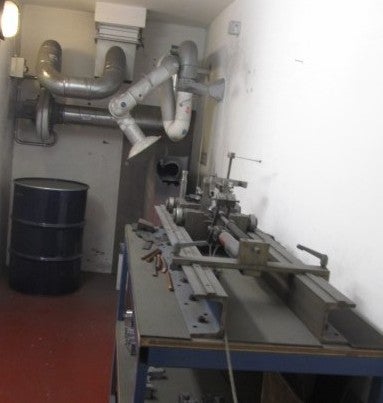
One of the proofing rooms where the firing takes place. The gun/barrel is placed in the vice on the right and is firing by the lanyard that can be seen trailing out of the photograph. Bullets are fired into the snail catcher and the lead is collected for disposal in the oil drum on the left.
Currently the Proof House uses three different methods to mark proof on a barrel. The oldest one is still in use today, and that is taking a punch with a proof mark on it and hammering it into the metal of the barrel. This method is preferred by the “Bespoke” gunmakers such as Holland & Holland, Boss, and Purdy because it is a hand driven mark. Their guns are after all, handmade. The second method is more industrial and that is by mechanically engraving the proof. Third is electronically cutting and that is done in a simple machine but takes the least amount of time.
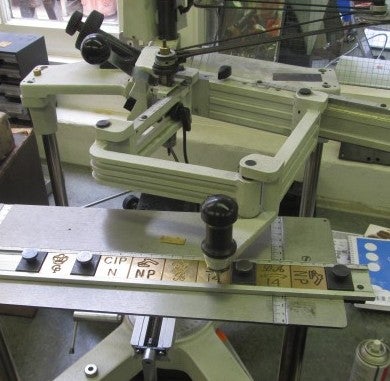
One of the modern day proof marking machines. Notice the different kinds of proof marks ready to be engraved. The crown with the the GP underneath is the London’s house signatory proof, GP standing for “Gunmakers Proof”. “CIP N” means that a firearm is nitro proofed to the European ammunition industry’s regulatory body, the Commission Internationale Permanente (CIP). The NP with scimitar surmounting means it is proofed to the British nitro standard. The second to last proof with the sword, number 14, and DA is the proof applied to deactivated firearms. “14” being the year 2014 it will be applied to.
The Proof House’s operations today are just as extensive as they were in the days of old. About 58% of the business is all military weapons, 31% is commercial firearms, 3% belongs to the “Bespoke” gunmakers and 8% are deactivated certifications. Surprisingly, there is a large market (relatively speaking, compared to the US) for American rifles and shotguns within the UK. This was evidenced by an entire pallet of Remington 700s and Marlin lever actions stacked up by the front entrance waiting to be proofed . All together the Proof House runs through around 18,000 firearms and barrels every year. And as the gun laws in the UK have become stricter, the Proof House has transferred more of it’s business concentration to the military side of things and the deactivated firearms market which is also huge. The Proof House is national firearm laws exempt, as it has to be in order to complete the military side of proofing.
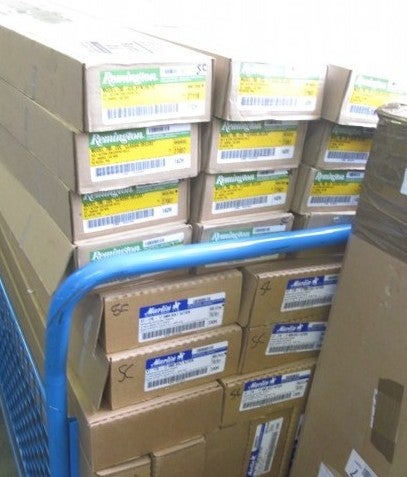
A pallet of the Remington and Marlin guns ready to be proofed at the Proof House and thereafter sold in the UK. These are sitting just inside the main entrance.
With the deactivated weapons, the Proof House can either turn a gun into a certified deactivated firearm and proof it as such, or it can destroy it altogether by cutting it into as many pieces as necessary. Here comes in play an interesting difference between the US and UK in regards to classifying firearms. In the United States, BATFE considers the receiver as a firearm. But in Europe, the barrel is considered a firearm. Due to this regulation most of the deactivation process centers itself around the barrel and the bolt face. This involves three major steps; slotting the chamber and barrel so as to make it near impossible to chamber a cartridge, machining the bolt face at a 45 degree angle, and if the firearm has any sort of looking system, machining them off (slide lugs, locking bars). With such a large industry around deactivated weapons, one would suppose that criminals would get their hands on them more often to use in robberies where the mere presence of a supposed weapon would accomplish their deeds. This is not the case, because criminals know that they are looking at a minimum five years in prison if they even brandished one of these weapons on the street.
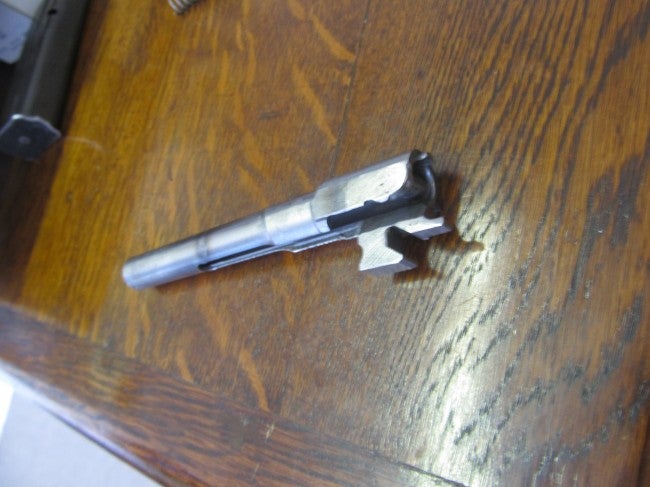
This is an FN Herstal Hi Power pistol that was deactivated by the Proof House and showing the cuts made to make it deactivated. Cutting of the breech face by 45 degrees, slotting the barrel and chamber, not pictured is machining off most of the slide rails.
The most incredible aspect of the Proof House is the amount of experience it relies on. When testing barrels and inspecting them, employees don’t use some sort of high tec gadgetry to confirm an observation. The Mark One eyeball and years of knowledge are behind most of the decisions affecting the proofs that take place. Barrels that might seem completely fine to a normal shooter will have their discrepancies pointed out in seconds by the employees. The Proof Master Richard Mabbitt showed the author how to perform a simple proof marking on a piece of scrap metal. Without any effort at all, he took a punch with the correct proof mark on it to the metal and slammed a hammer to it. The proof was perfect, and the method looked easy enough. It took the author several attempts to even get somewhat close to what Mabbitt had executed. An experienced Proof House employee can even relocate a proof mark 360 degrees, to any position he wants if the angle was wrong. He does this by indexing the already hammered proof mark and gently hammers away at the punch while simultaneously rotating the punch until it is in the correct position. He is literally “moving” the metal around. Baffled, the author requested a demonstration and sure enough, it took place just as described.
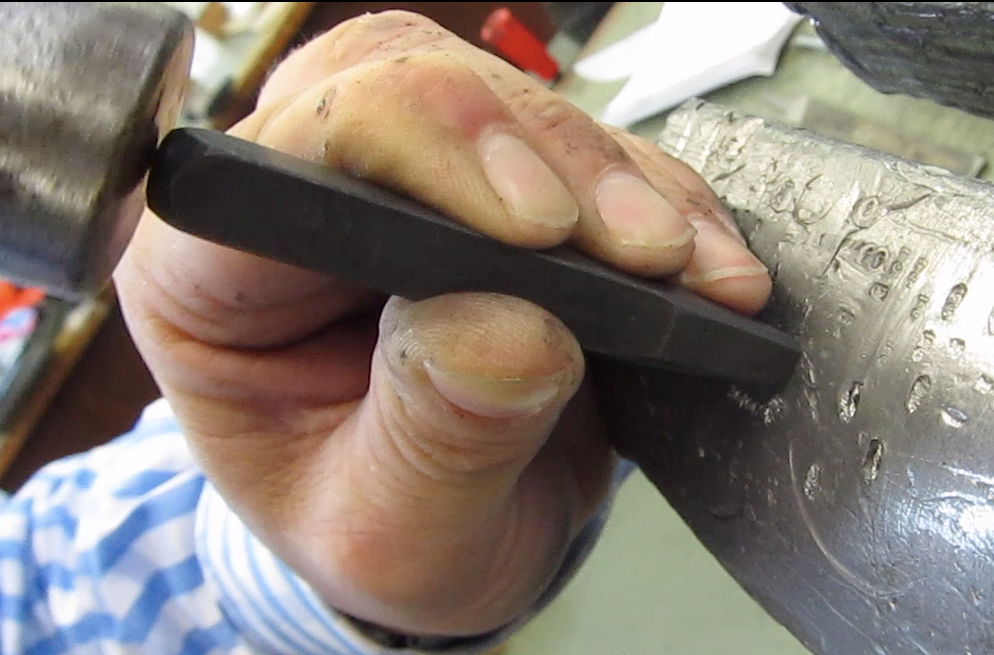
Richard Mabbitt demonstrating how to execute a proof on a vice. This simple method has been in use since before 1637 and is still being used today on the “Bespoke” guns.
So what does the future hold for the Proof House? The simple answer is that as long as guns are being used commercially in the UK, business is booming. But with the commercial regulations against firearms increasing by the decade, this might not be a viable source of revenue in the coming years. Thus, as evidenced earlier by the military taking up 58 %, this figure might increase due to the economics of supply and demand. But to the average bloke on the street? Pop down to the Aldgate East tube station, walk down Commercial Road and stand outside the Proof House. If they won’t let you in for a tour, then be content that you’re standing outside a historical business that hasn’t changed it’s procedures for well over three hundred years.
Thanks to Trevor Weston at the National Firearms Centre for helping arrange this visit.
 Your Privacy Choices
Your Privacy Choices

